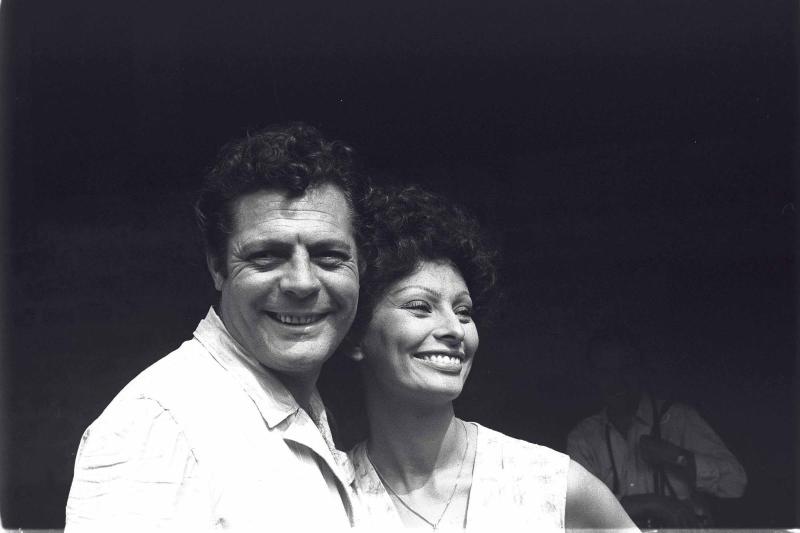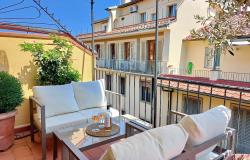This week marks a full century since the actor Marcello Mastroianni entered our world. Now, nearly 30 years on since he exited, it remains quasi-illegal to write anything about him without using the two words he detested most of all: “Latin Lover.” Dating back to at least 1960, when his performance in Federico Fellini’s La dolce vita transformed the Lazio-born actor into an international star, these words stained Mastroianni’s reputation like lipstick on a collar — despite his lifelong efforts to scrub it clean.
Marcello Mastroianni was born in the small town of Fontana Liri to a family of poor artists and artisans, including his uncle, Umberto, an important abstract sculptor, and his younger brother, Ruggero, who would go on to become a top Italian film editor. His father, a cabinetmaker, was blind, and his mother reportedly deaf, and yet they instilled in him a love of film: “He would ask her what they were doing on the screen,” Mastroianni once reflected, “and she would ask him what they were saying.”
Mastroianni carried this love of cinema with him all the way to Cinecittà, where he’d land his first role at the age of 14. From there until the end — Manoel de Oliveria’s Voyage to the Beginning of the World was released a year after the actor’s death in 1996 — his varied roles and unmatched charisma cemented him as one of the most beloved stars in history.
The birth of a reputation
Of course, with such fame came perks — or consequences, depending on who you’re asking. Being wed to Mastroianni, as actor Flora Carabella was from 1950, required resolve (to say the least). His infidelity forced her to evolve, for her own peace of mind, from an “offended wife…into a friend,” as Carabella once told People magazine. After their unofficial separation in 1964, a seemingly unrepentant and undeterred Mastroianni would co-author considerable tabloid fodder with an impressive list of co-stars, including Lauren Hutton, Faye Dunaway, Ursula Andress and Catherine Deneuve, the latter with whom he shared a daughter, actress Chiara.
While we can’t know the degree of remorse Mastroianni might have felt for having undermined his only marriage, it’s clear that the status accompanying his extramarital exploits was unsettling for the actor. It’s likely that for Mastroianni — who grew up under Fascism and spent much of the war hiding with a forged visa in a tailor’s attic in Venice after narrowly escaping a Nazi prison camp — the chauvinism at the core of the “Latin Lover” archetype uncomfortably brought to mind the oppressive ideals of masculinity imposed by the regime. (And if it didn’t, well, it should have.)
The more the public tried to paint Mastroianni as some macho demigod, the more he recoiled. “I have a common face, anonymous — a little peasant face,” he would deadpan. “My legs are skinny, my face has no power or resolve. [Hollywood stars like Humphrey Bogart or Paul Newman] knew where they were going — or at least, we presumed they knew. I haven’t any idea. If they were heroes, then I’m a non-hero.”
Given that it is the man’s birthday, delving deeper into such claims seems like the best gift we can give Mastroianni’s memory. Below, we honor a few of the many instances in which this “peasant-faced non-hero” actively fought to dismantle his reputation as the proverbial Latin Lover — one that he described, in his notoriously broken English, as “a crazy thing, really. A stupidity.”
The yellow journo: La dolce vita
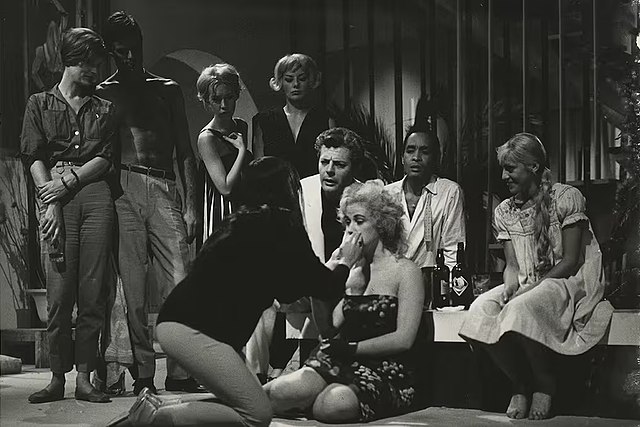
Why is Federico Fellini’s La dolce vita, the one film more responsible for Mastroianni’s lecherous reputation than any other, even on this list? In short, because it was (and remains) misunderstood, starting with the deceptively sweet title, which was meant to mock the postwar decadence of Rome’s stylish jetset.
Yes, it’s tempting to project one’s dreams upon the film’s iconic fashion, or to miss the point entirely and envy Marcello Rubini — Mastroianni’s carefree, endlessly cool character — for being surrounded by beauty in all its forms. The “point” was much uglier: According to Mastroianni scholar Jaqueline Reich, the film documents tabloid writer Rubini’s Dantesque journey to ruin in Rome, a “downward moral spiral” in which a broken man seeks counsel in other broken men and in shallow, destructive exploits with women. Driven by “self-absorbed materialism and decadence,” as an American minister said at the time, Rubini is rotting from the inside out. (Though he sure looks sharp in his suit and sunglasses.)
The boy next door: Il bell’antonio and beyond
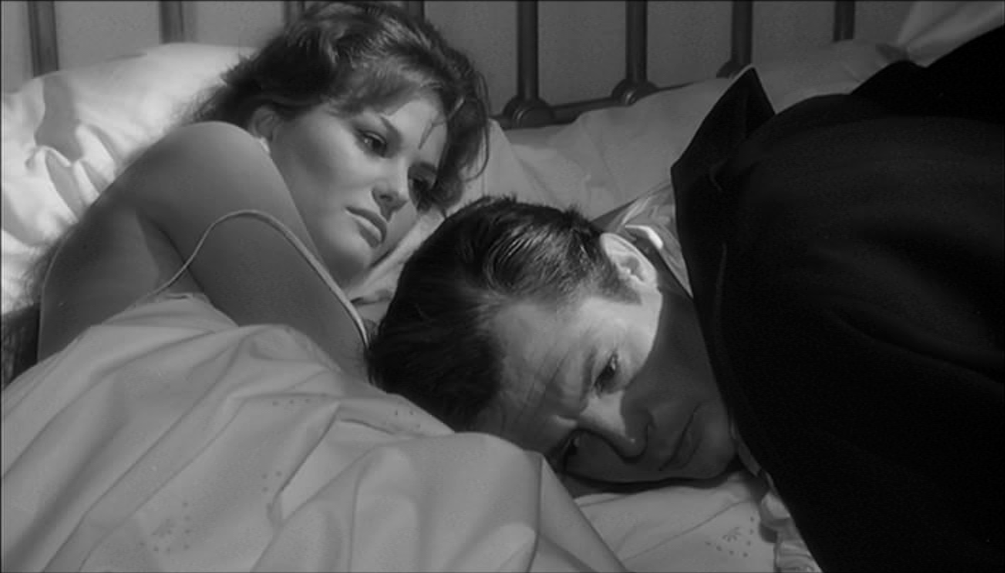
“After La dolce vita, they always offered me [the role of] the cute young man with the blue jacket and gold buttons, surrounded by women, looking for adventures more out of boredom than true passion,” Mastroianni once said. “So I immediately played Il bell’ Antonio, the impotent; and then the betrayed husband [Michelangelo Antonioni’s La notte, 1961]; the homosexual [Ettore Scola’s Una giornata particolare, 1977], the priest [Elio Petri’s Todo Modo, 1976], the pregnant man [Jacques Demy’s A Slightly Pregnant Man, 1973], the man in love with the dwarf [María Luisa Bemberg’s I Don’t Want to Talk About It, 1993]…”
Released in the same year as La dolce vita, Marco Bolognini’s Il bell’Antonio (titled Handsome Antonio internationally) tells the story of a perfectly normal, good-looking southerner with a secret: He’s unable to perform sexually with those he loves. Updating Vitaliano Brancati’s novel, which was set during the Fascist era of machismo, Bolognini moves his film to the present day, telling a tale of the psychosocial influence on modern sexuality and soaking it through with subversive queerness (it was co-written for the screen by the great Pier Paolo Pasolini, after all).
Countering any illusions that Italian society had moved on from Fascist-era masculinity, or what Brancati called gallismo — in which men’s principal purpose was to serve, machine-like, as soldiers and procreators — the film was controversial, drawing the ire of politicians and the knife of the censors. For audiences, however, the true controversy was Mastroianni’s rebellion against the star system as a heartthrob playing an impotent man.
The real man: Una giornata particolare
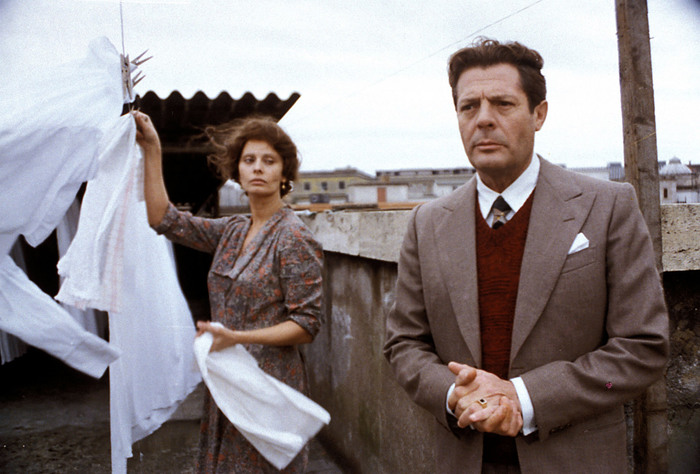
Attacking Fascist mores more directly, Ettore Scola’s Una giornata particolare (1977) offers Mastroianni as a persecuted gay man alongside Sophia Loren as an oppressed housewife on the day in 1938 when Hitler paid his first visit to Rome. A devastating film with a nuanced performance by Mastroianni that earned him his second Academy Award nomination for Best Actor, it’s notable not just for the fact that Mastroianni was open to playing a non-heteronormative man (quite a bold move at the time), but for addressing how it feels to be treated like an enemy of society just for being yourself. The pairing with Loren intentionally undermined the duo’s iconic onscreen romances, and though her performance here is as powerful and commanding as ever, it’s Mastroianni’s that helps draw the line between manipulative “Oscar bait” and the intimate, imperfect little film that it is.
The politician: I compagni and Dramma della gelosia

Though no one would mistake Mastroianni for being overtly political, he never abandoned his modest roots; if anything, the values they instilled in him often guided him in the roles he chose. (Witness his performance as an earnest professor-turned-labor organizer in Mario Monicelli’s I compagni (1963), set amid the labor movements of 19th century Turin.)
But we see a rage previously lacking in his body of work channeled in his turn as a dedicated old-world Communist in Ettore Scola’s tragically allegorical 1970 film Dramma della gelosia (released in the United States under the incredibly stupid title The Pizza Triangle, presumably to highlight the fact that it involves a ménage à trois that happens to be set in Italy). Uneducated, aging and hopelessly in love with Adelaide (Monica Vitti), Mastroianni’s Oreste represents a dying ideology forced to compromise with a new generation of brash, self-righteous student activists, brought to life here by Giancarlo Giannini’s Nello. In fighting over Adelaide, the woman they both love (who ostensibly represents Italy), Oreste and Nello leave only destruction in their wake. Oreste is feverish with love, sure, but he’s also scattered and insecure — a far cry from your typical Lothario.
Ol’ Snaporàz: 8 ½ and the bond with Fellini
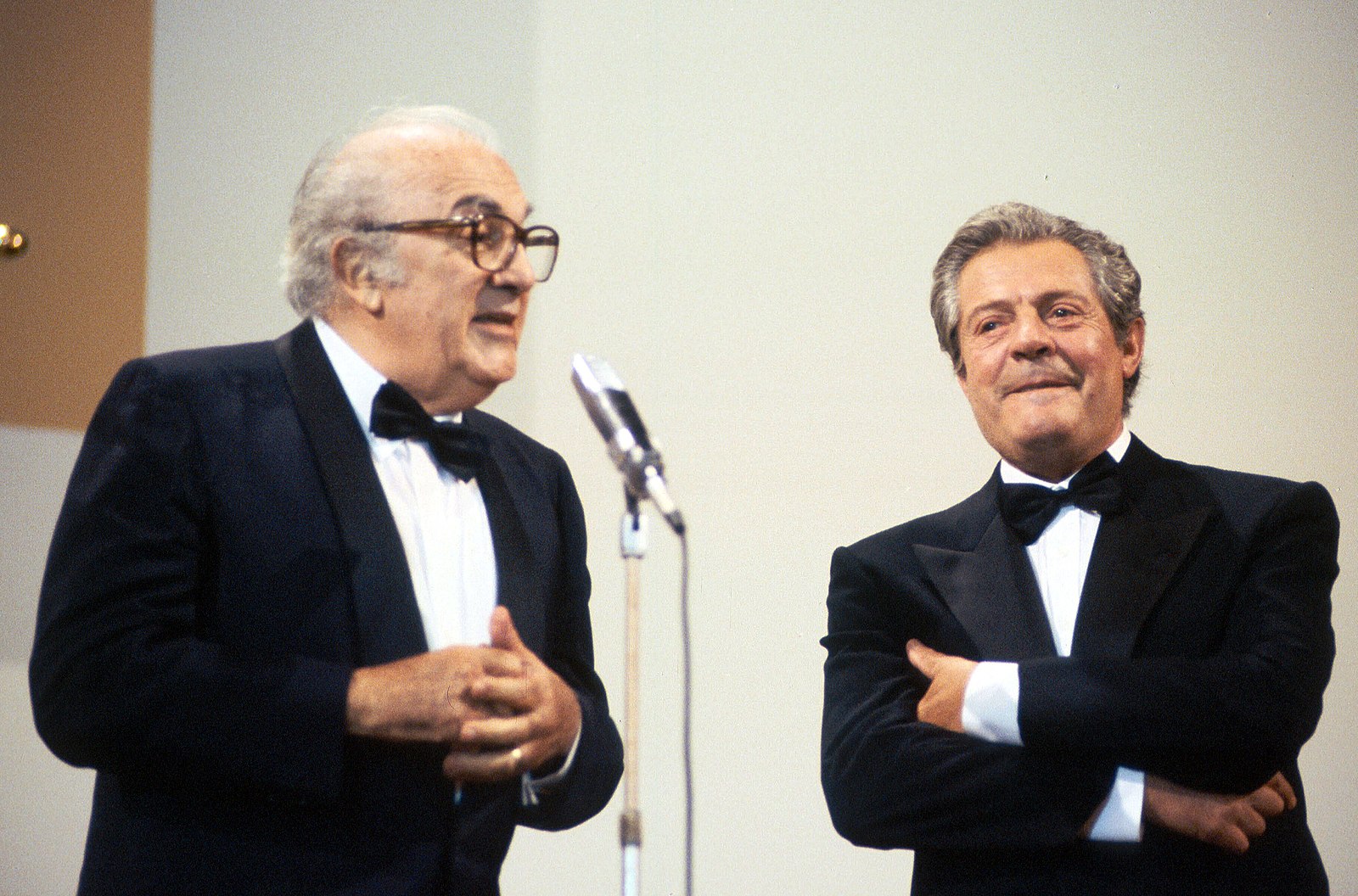
Mastroianni’s struggle to differentiate himself from Rubini, his La dolce vita alter-ego, might have seemed intentional on Fellini’s part, given the actor’s and character’s shared first name. But Fellini would turn the tables in 8 ½ (1963), his second collaboration with Mastroianni: Here, Fellini grays the actor’s hair, plops a hat on his head and casts him as a director in the midst of an existential and creative crisis (an obvious stand-in for Fellini’s own insecurities).
Fellini and Mastroianni wouldn’t collaborate again for another 17 years (save for the semi-documentarian Roma (1972) in which Mastroianni revives Rubini in a brief cameo). 1980’s Città delle donne serves as a kind of loose sequel to 8 ½, with Mastroianni officially credited as “Snaporàz,” his character’s (only briefly uttered) nickname in the latter film. The moniker was an inside joke between Fellini and Mastroianni that was never officially addressed in public, but it derives from the director’s romagnolo dialect and references Mastroianni’s “country bumpkin” background. Having finally earned his own gray hair by the time Città was filmed, Mastroianni’s “Marcello Snaporàz” struggles to comprehend the ever-evolving progression of a feminism that he feels threatens to swallow him whole.
The film was also another opportunity for Mastroianni to parody his Latin Lover persona with a wink to his more fervent fans. He’d already done this with Il bell’Antonio right after La dolce vita; then, playing a man obsessed with the breaking point of an inflated balloon in Marco Ferreri’s L’uomo dei cinque palloni (1967), he more explicitly mocked the vanity of his 8 ½ character. Finally, at the twilight of his career in Robert Altman’s Pret-a-Porter (1994), Mastroianni, together with Loren, reproduced a famously seductive striptease scene from Vittorio de Sica’s Ieri, oggi, domani (1963), though his character falls asleep before things can progress any further. Always close, but rarely consummated, their screen partnership ended with Altman’s film, their final appearance together before Mastroianni’s death.
Mastroianni ultimately featured in a remarkable 147 films and in many ways his career defied classification. It’s a challenge to pin down any actor, let alone one whose characters spanned both rake and rascal, both lecher and leper, both sinner and saint. But there’s one clear thread through much of the Mastroianni catalog: For all his glamour and charisma, at the heart of everything “Ol’ Snaporàz” was still just a poveraccio from Fontana Liri doing his best to figure it all out.
Get more Marcello
If you’ve already seen the Mastroianni classics and made a dent in his “B-sides,” Christophe Honoré’s 2024 film Marcello Mio is worth checking out. Starring Mastroianni’s daughter Chiara, who remained on good terms with her father throughout his life, it’s a clever take on the idea of living in someone’s shadow (and also features Catherine Deneuve).
